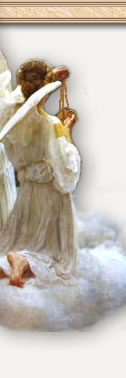




 |
|

|
|
|||||||||||
|
|
|
|
||||||||||||
 |
|
|
||||||||||||
 |
|
 |
|
|||||||||||
|
|
||||||||||||||
 |
 |
|
|
|
|
A Final Commentary Rather than addressing the controversy engendered by Father de Montjoye’s article, Father Devillers presents a number of legal arguments (binding upon no one) to the effect that all SSPX clergy can be considered schismatics, even though the Pope’s 1988 motu proprio contains no such conclusion. To recall the real issue, Father de Montjoye, going far beyond the motu proprio, has declared that all the priests of the SSPX, not just the four bishops, are schismatic “non-Catholic ministers” who “do violence” to the Holy Eucharist whenever they confect it. Father de Montjoye further opines that any of the faithful who communicate at SSPX Masses participate in sacrilege and rebel against divine law, which forbids the active participation of Catholics in non-Catholic worship. Father Devillers does not deny that I have accurately presented Father de Montjoye’s views. Nor does he comment on the peculiarity of this sudden return to a rigorous application of the Church’s traditional teaching on schism at the same time the Vatican has abandoned such rigor in its dealings with indubitable schismatics of all stripes, including the 100 illicitly consecrated bishops of the communist-controlled CPA. Here it should be noted that in 1994 the bishops of the CPA, whose very constitution rejects submission to the Roman Pontiff, issued a “pastoral letter” calling upon all Chinese Catholics to support China’s genocidal “population control” policies. Yet in September 2000, during a visit to China, the Vatican’s Cardinal Etchegaray praised “the fidelity to the Pope of the Catholics of the official church [CPA]” while also praising “the heroic fidelity of the silent Church”—i.e., the Catholic bishops, priests and laity who are brutally persecuted by the Jiang regime for refusing to join the supposedly “faithful” Catholics of the CPA!1 Cardinal Etchegaray even went so far as to declare, “Basically it is a question of one Church, and one common faith, trying bit by bit to overcome the unhappy separation into ‘underground’ and ‘official.’”2 This is only one small part of a factual context in which Father de Montjoye’s condemnation of the SSPX appears very strange indeed. As I demonstrated in my article, Father de Montjoye’s extreme views on the SSPX are not supported by any public ecclesiastical document binding upon the Church, much less by the Vatican’s actual practice toward manifest schismatics such as the CPA bishops. Quite the contrary, as I showed from various official and unofficial Vatican statements, it is clear that on a practical or existential level (putting aside the strict letter of the motu proprio) the Vatican prelates who have care of the matter have not treated the SSPX as truly and properly schismatic, even as to the four bishops. Here Father Devillers has not really addressed the evidence. First of all, Father Devillers fails to discuss the official letter of the Ecclesia Dei Commission by Monsignor Perl (Protocol No. 539/99, September 28, 1999), which advises that Catholics who attend Mass at SSPX chapels incur no penalty if they do so “because of the reverence and devotion which they find there, because of their attraction to the traditional Latin Mass and not because they refuse submission to the Roman Pontiff.” Father Devillers thus concedes my point that Monsignor Perl would hardly have given such advice if, as Father Montjoye claims, SSPX priests were non-Catholic ministers who “do violence” to the Sacrament with every Mass they offer, or if lay participation at SSPX Masses were a violation of divine law through active participation in non-Catholic worship. Obviously, Monsignor Perl could not have viewed worship in SSPX chapels as non-Catholic when he described it as “the traditional Latin Mass.” Father Devillers cites a 1996 document from the Pontifical Council for the Interpretation of Legislative Texts (PCILT) (not published until 1998) on what might constitute “formal adherence” to the declared schism where SSPX priests are concerned. The very quotation provided by Father Devillers, however, demonstrates that the PCILT text merely expresses opinions without the force of ecclesiastical law:
Observations about what “seems” to be the case with SSPX priests can hardly bind the universal Church, especially in view of the later advice of Monsignor Perl, who is Secretary of the Pontifical Commission Ecclesia Dei, which commission Father Devillers admits “is the one competent here.” In fact, Monsignor Perl’s 1999 letter notes that the Holy See has never defined the term “formal adherence.” Thus, not even Monsignor Perl cites the 1996 PCILT document as binding on the faithful. Father Devillers states that Cardinal Cassidy’s letter of May 3, 1994 “does not affirm there is no schism but only that SSPX is not under his competence since the Society of St. Pius X does not constitute another Church or Ecclesial Community in the meaning used in the Ecumenical Directory.” But Father Devillers does not mention Cardinal Cassidy’s statement in the same letter, which I quoted, that “the situation of the members of this Society [SSPX] is an internal matter of the Catholic Church.” Father Devillers does not answer the question of how a true and proper schism could be viewed as an internal Church matter. Concerning the letter from Cardinal Castrillon Hoyos to Bishop Fellay, Father Devillers asserts that the two sentences in which the Cardinal states that he “does not consider them [SSPX clergy] schismatic are both in the past tense, as though he did not have this impression any longer.” One may of course disagree with Father Devillers’ speculation about the Cardinal’s present state of mind. But leaving that aside, Father Devillers overlooks an obvious question: How could Cardinal Castrillon Hoyos have acquired the “impression” that SSPX clergy are not schismatic if, as Father de Montjoye claims, the schismatic status of all SSPX clergy, bishops and priests alike, is beyond dispute? At any rate, a fair reading of the Cardinal’s letter as a whole shows that he (unlike Father de Montjoye) does not write the SSPX clergy out of the Church, but rather suggests that some SSPX adherents (whom he does not name) lack faith in “the authentic tradition” of the Church, which is not the same as saying that they are not Catholics. The necessary implication is that the Cardinal still regards the generality of SSPX clergy, including Bishop Fellay himself, as Catholic brethren in an irregular situation. By no stretch of the imagination can the Cardinal’s letter support Father de Montjoye’s extravagant claim that SSPX clergy are non-Catholic ministers committing daily sacrileges and transgressions of divine law. In this connection Father Devillers quotes Father Gerald Murray as follows: “The Society of St. Pius X and those who frequent their chapels must realize that continuing on a path of defiance and separation from the Holy See, and from the Church in general, will inevitably lead them further and further away from Catholic unity and into undeniable schism.” But how could SSPX be led into “undeniable schism” if it is already supposed to be in such a state? Father Devillers also cites Father Murray’s argument that the SSPX bishops are bound to observe the public effects of the 1988 excommunication since they did not contest it by way of administrative recourse, even if the excommunication may be inoperative in the internal forum due to lack of subjective culpability. But what does this have to do with the question of schism on the part of the bishops and the priests of the SSPX, the latter never having been declared excommunicated? Schism is a state, not a penalty like excommunication. That is, schism cannot be imposed as the punishment for some act. The state of schism either exists or it does not. In this regard, Father Devillers concedes that Cardinal Castillo-Lara admitted to the press that the episcopal consecrations of 1988 were not in themselves a schismatic act since the Code of Canon Law does not treat illicit episcopal consecrations as per se schismatic. If that is true, then there was no canonical basis for the declaration of schism because the motu proprio cites only the 1988 episcopal consecrations as grounds. While Father Devillers quotes Cardinal Castillo-Lara’s later “clarification” that the 1988 consecrations merely “concretized” a preexisting schism, there is no Vatican pronouncement nor any evidence, that the SSPX was in schism before 1988. The Cardinal’s opinion thus appears to be without basis in law or in fact. As we can see, Father Devillers’ own cited authorities only underscore the point that despite the letter of the motu proprio, there is a legitimate tendency, even among Vatican prelates, to view the SSPX as being in a situation that does not really fit into the existing canonical category of a true and proper schism. I conclude by noting Father Devillers’ statement that “I do find some serious confusion in the way Mr. Ferrara presents the question of the canonical status of the Society of St. Pius X (SSPX).” In this he is quite correct. My presentation evinces “some serious confusion” because it describes a seriously confused situation. It is a situation without precedent in Church history, like so many other things in the postconciliar landscape. My basic point, which Father Devillers does not address, is that in view of this confusion Father de Montjoye is hardly in a position to declare what the Vatican has refrained from declaring: that SSPX priests and bishops are non-Catholics who do violence to the Eucharist, and that any Catholic who participates in their Masses transgresses divine law by partaking in non-Catholic worship. The Latin Mass , for which I write this article, has indicated to me its strong support for the Priestly Fraternity of St. Peter’s important work in the cause of Tradition, particularly its vibrant North American apostolate with a seminary full of exemplary candidates for the sacred priesthood. Likewise, any reader of The Latin Mass knows of its strong support for the Pope and his delegates in their effort to regularize the SSPX, a delicate process in which charity and diplomacy are essential to success. Given that the thing to be desired is a unification of the various groups with a “charism in service of Tradition” (to recall Cardinal Castrillon Hoyos’ description of the SSPX), Father de Montjoye’s astonishingly harsh condemnation of SSPX clergy could not have been more inopportune. What remains unexplained is why this condemnation was published, and why it appeared when it did. Notes 1 Zenit, September 28, 2000. 2 Catholic World News, September 25, 2000. |
|



♦ About The Mass ♦ Resources ♦ How To Help ♦ Contact Us ♦